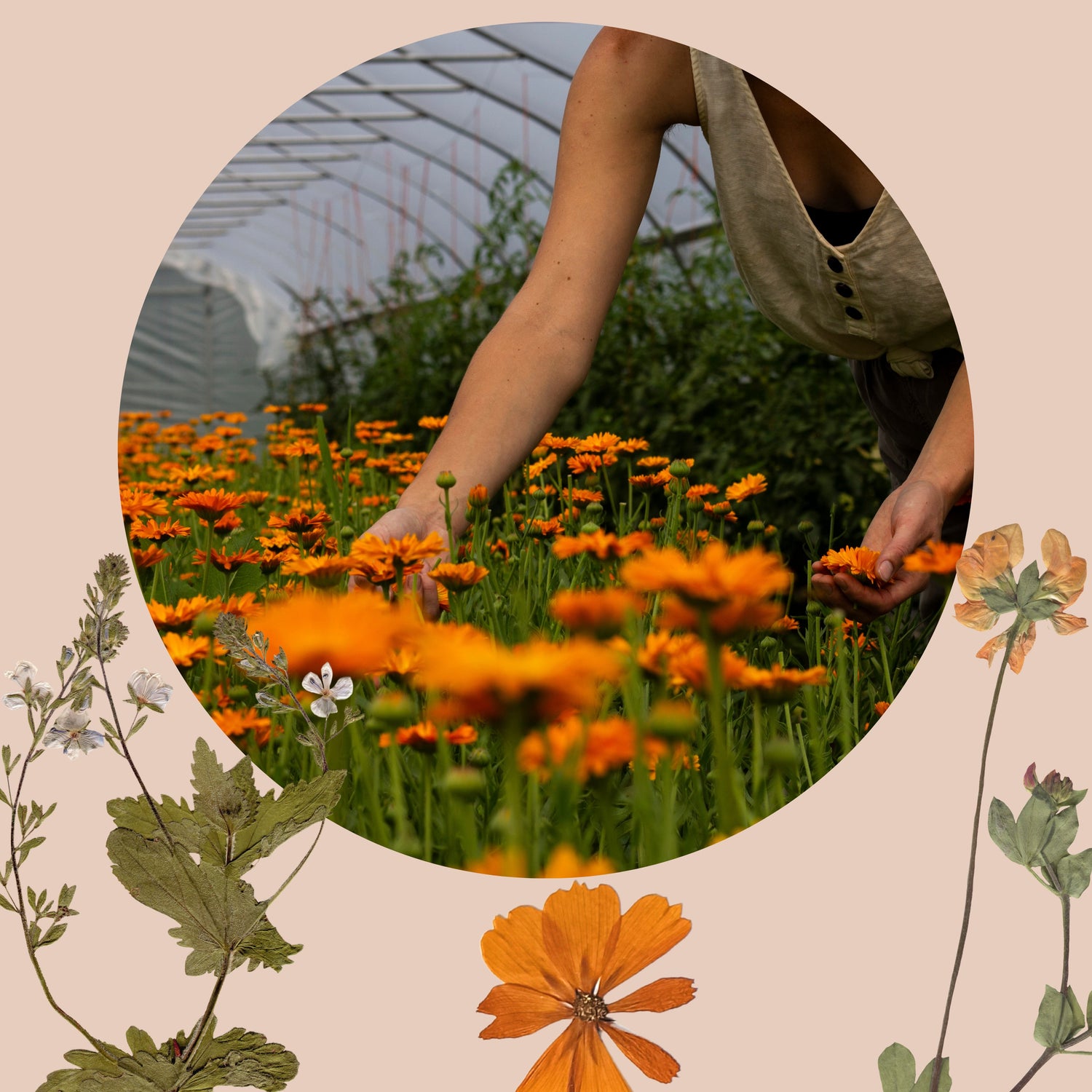Whether you're sipping to soothe your belly, nourish your body, or ignite a little passion, how you prepare your herbs makes all the difference. At Bloodroot Apothecary, we believe herbal medicine begins with intention—and that includes knowing when to use an herbal infusion versus a decoction.
So let’s break it down.
What is an Herbal Infusion?
Think of infusions as an herbal tea with a purpose.
An herbal infusion is when you steep dried or fresh plant material—typically the leaves, flowers, or soft stems—in hot water for an extended period of time. Unlike your average tea bag steeped for 3 minutes, medicinal infusions call for 20–30 minutes (or even overnight) to extract vitamins, minerals, and therapeutic compounds.
Best herbs for infusions:
- Nettle
- Oatstraw
- Lemon balm
- Rose Hips
- Dandelion leaf
- Raspberry leaf
- Horsetail
- Chamomile
- Tulsi
- Red clover
These herbs are high in trace minerals, nervines, and nourishing compounds that don’t require long simmering to release their medicine.
How to Make an Herbal Infusion (French Press Method)
If you’ve ever made coffee in a French press, good news—you're already halfway to brewing a potent cup of plant medicine.
Using a French press for herbal infusions makes the process easy, mess-free, and perfect for getting the most out of your herbs. It’s especially great for leafy and flower-based blends like our Steward and Soother teas.
Here’s how:
🛠 What You’ll Need:
-
1 oz (about 1 cup loosely packed) dried herbs
-
1 quart (4 cups) just-boiled water
-
1 French press (32 oz is ideal)
-
A cozy spot to steep for 30–60 minutes or overnight
🧪 Directions:
-
Add the herbs to the bottom of your clean French press.
-
Pour freshly boiled water over the herbs, filling to the top.
-
Place the lid on but don’t plunge yet!
-
Let the herbs steep for 30–60 minutes (or overnight for deeper mineral extraction).
-
When ready, gently press down the plunger to strain.
-
Pour into your favorite mug and sip slowly.
You can refrigerate the rest and enjoy it cold or reheated throughout the day.
🌿 Pro tip: If you’re drinking mineral-rich teas like nettle or oatstraw (hi, Steward!)—steeping for 4–8 hours or overnight allows for a richer extraction of calcium, magnesium, and iron.
Want to try herbal infusions for daily nourishment or digestive repair?
Explore our best-selling infusion blends:
👉 The Steward — A deeply mineral-rich herbal tea with nettles, oatstraw, raspberry leaf, and lemon balm
👉 The Soother — A calming blend crafted to support digestion with marshmallow, calendula and fennel
What is an Herbal Decoction?
A decoction is used when working with tougher plant parts like roots, barks, and seeds. These need more coaxing to release their constituents, so rather than steeping, we simmer them gently on the stove for 20–45 minutes.
Decoctions are rich, robust, and often carry a stronger flavor—and more medicinal punch.
Best herbs for decoctions:
- Cinnamon bark
- Dandelion root
- Burdock root
- Licorice root
- Ginger
- Hawthorn berries
- Astragalus
- Ashwagandha
- Willow
- Eleuthero
- Cardamom pods
- Fennel
- Marshmallow root
- Shatavari
How to Make a Herbal Decoction (Root & Bark-Based Teas)
When working with tougher plant parts—like roots, bark, seeds, and berries—a simple steep won’t do. These parts need heat and time to fully release their medicinal compounds.
That’s where herbal decoctions come in: a slow simmer that coaxes out the deep magic.
This method is perfect for blends like The Lovers, which includes rich, warming botanicals like cinnamon, shatavari, ginger, and damiana. (Infuse this tea in a milk base and sweeten with maple syrup to make it absolutely divine)
🛠 What You’ll Need:
-
2 tablespoon of dried root/bark-based herbal blend per cup of water
-
Cold water (start with 3–4 cups)
-
A small covered pot (preferably non-aluminum)
-
A fine mesh strainer
-
Optional: raw honey, citrus, or warming spices for flavor
🔥 Directions:
-
Measure your herbs into a small pot.
-
Add cold water (about 1 cup per 2 tablespoon of herbs).
-
Cover and bring to a gentle boil over medium heat.
-
Once boiling, reduce to a simmer and let cook for 20–45 minutes, depending on how strong you’d like it.
-
20 minutes for lighter decoctions
-
Up to 45 minutes for denser roots or immune-tonic formulas
-
-
Turn off the heat and let sit covered for 10–15 minutes to settle and cool slightly.
-
Strain through a fine mesh sieve and pour into a mug.
-
Sweeten or adjust flavor if desired. Enjoy warm or store in the fridge for up to 48 hours.
🌿 Pro tip: Some herbalists like to decoct their roots first, then pour that strained liquid over soft herbs (like rose or mint) to combine decoction and infusion methods—this is great for blends with mixed textures like The Lovers.
Why Decoctions Matter
By taking the time to simmer your herbs, you’re honoring the plant and accessing deeper layers of medicinal compounds—especially tannins, resins, alkaloids, and polysaccharides that support immunity, circulation, and deep repair.
You’re not just making tea—you’re slow-extracting plant medicine
Which Should You Use?
-
Choose infusions when working with delicate herbs for daily nourishment, stress relief, or gentle support
-
Choose decoctions when using roots or bark-based blends for deeper action, like stimulating circulation, digestion, or the immune system
And yes—you can combine both! This is called a layered brew, where you simmer the roots first, then pour that liquid over your delicate herbs to steep.
Final Thoughts
Understanding the difference between infusions and decoctions brings you closer to the plants and their medicine. Whether you're brewing a mineral-rich cup of The Steward or lighting a fire in your belly with The Lovers, each preparation style honors the herbal tradition and your unique body needs.
Ready to start brewing with intention?
👉 Shop our handcrafted herbal teas here


